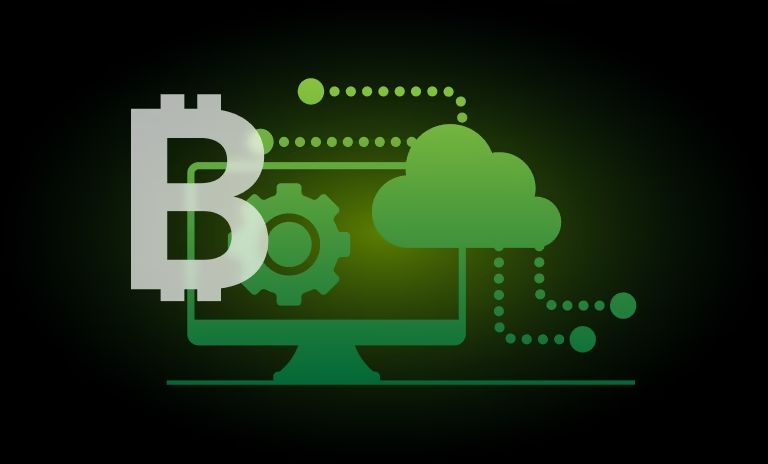
Edge computing is shaking up how bitcoin and crypto networks handle data. Most people focus on monster mining farms and massive servers, but that picture is about to change. By 2025, up to 75 percent of all data could be processed outside the old-fashioned central data centers and this shift will open the door for faster transactions, lower energy bills, and a much more decentralized future for crypto than almost anyone expects.
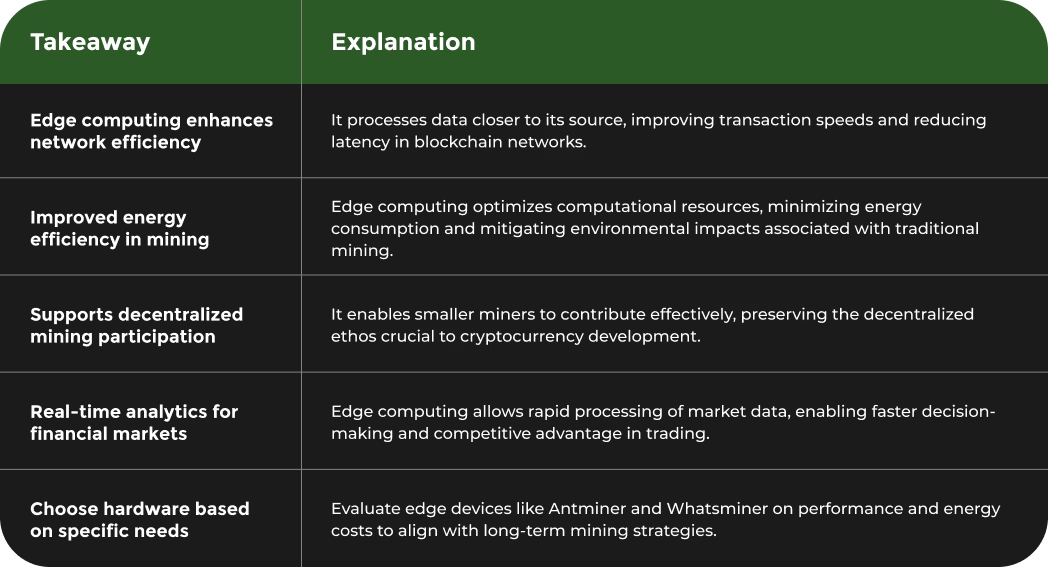
Edge computing represents a transformative approach to data processing that shifts computational capabilities closer to the source of data generation. In the context of bitcoin and cryptocurrency networks, what is edge computing becomes critically important for enhancing performance, reducing latency, and improving overall network efficiency.
At its fundamental level, edge computing decentralizes computational processes by moving data processing away from centralized data centers and closer to where data is actually created. For cryptocurrency networks, this means processing transactions, validating blocks, and managing network operations at localized points rather than relying solely on distant, centralized servers.
The IBM Cloud Education explains that edge computing allows data to be processed near the source of generation, which can significantly reduce transmission costs and improve response times. In bitcoin mining and blockchain networks, this translates to faster transaction verification and more efficient network performance.
Cryptocurrency networks stand to benefit dramatically from edge computing architectures. By distributing computational workloads across multiple edge nodes, networks can achieve greater resilience, reduced bottlenecks, and enhanced security. Gartner Research suggests that edge computing can help organizations process up to 75% of data outside traditional centralized data centers by 2025.
For bitcoin and crypto ecosystems, this means miners and network participants can leverage localized computing resources, reducing dependency on massive centralized mining farms. Edge computing enables more distributed, democratic participation in blockchain networks by allowing smaller operators to contribute computational power more effectively.
The technological shift towards edge computing represents more than just a technical upgrade. It embodies a fundamental reimagining of how computational resources are deployed, managed, and optimized in increasingly complex digital networks. As cryptocurrency continues to evolve, edge computing will play a pivotal role in determining network efficiency, scalability, and overall performance.
Edge computing is poised to revolutionize bitcoin mining by addressing critical challenges in computational efficiency, energy consumption, and network decentralization. The integration of edge computing technologies promises to transform how miners process transactions and validate blockchain networks.
Bitcoin mining requires immense computational power, and edge computing offers a strategic solution to optimize hardware performance. IEEE Spectrum reports that Bitcoin mining operations in the United States consumed 32.3 terawatt-hours of electricity between August 2022 and July 2023, highlighting the urgent need for more efficient computational strategies.
Edge computing enables miners to distribute computational workloads across multiple localized nodes, reducing the strain on individual mining rigs. By processing data closer to the source, miners can minimize latency, enhance transaction verification speeds, and reduce overall energy expenditure. This approach directly addresses the escalating environmental concerns associated with traditional centralized mining operations.
The rapid technological evolution in cryptocurrency mining creates significant electronic waste challenges. ScienceDirect research highlights the persistent issue of hardware obsolescence, where mining equipment becomes unprofitable within short timeframes.
Edge computing introduces a more sustainable approach by enabling more flexible and adaptive computational resources. Miners can leverage modular edge computing infrastructure that allows for incremental upgrades and more efficient hardware utilization. This strategy reduces electronic waste and provides miners with greater economic flexibility in managing their computational assets.
A groundbreaking arXiv research paper explores cooperative task offloading and block mining schemes using edge computing, demonstrating potential for enhanced blockchain network decentralization. By distributing computational tasks across multiple edge devices, bitcoin mining becomes more democratic and resistant to centralization risks.
Edge computing empowers smaller mining operations to participate more effectively in blockchain networks. Instead of relying on massive, centralized mining farms, individual miners and smaller collectives can contribute meaningful computational power. This approach aligns with the original decentralized ethos of cryptocurrency, creating a more inclusive and resilient mining ecosystem.
As we approach 2025, edge computing stands as a transformative technology for bitcoin mining. It offers a comprehensive solution to efficiency, sustainability, and decentralization challenges, positioning itself as a critical innovation in the ongoing evolution of cryptocurrency infrastructure. Learn more about our mining solutions.
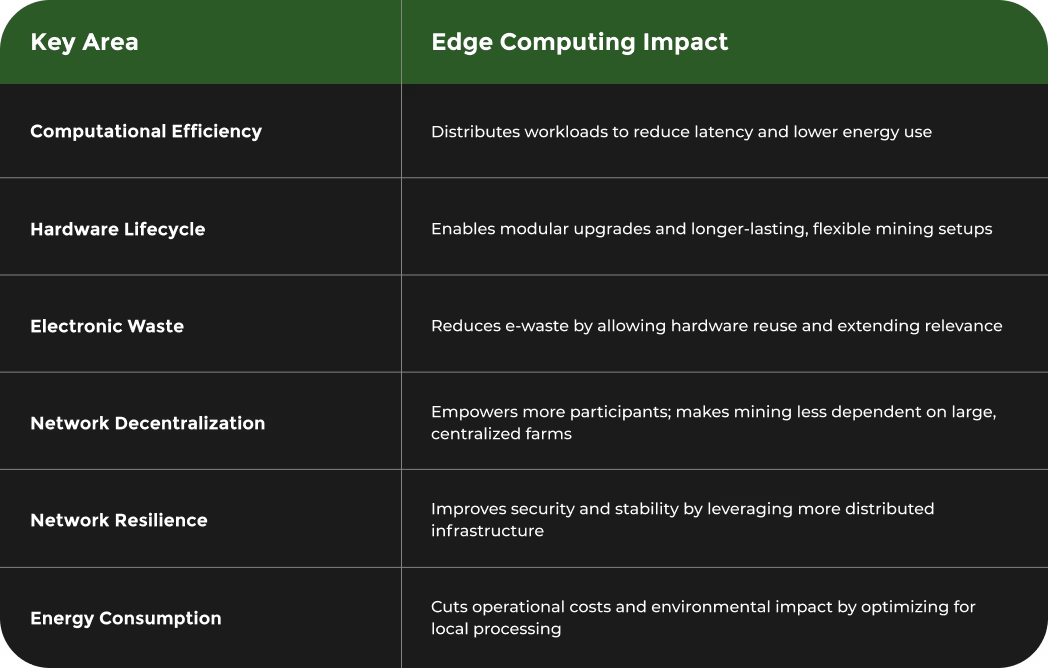
Edge computing is rapidly transforming financial technology and cryptocurrency markets by enabling faster, more secure, and more decentralized computational processes. As financial systems become increasingly complex and data-driven, edge computing emerges as a critical technology for managing real-time transactions, reducing latency, and enhancing overall market responsiveness.
ResearchGate studies highlight how edge computing revolutionizes financial analytics by dramatically reducing processing latency. In cryptocurrency markets, where milliseconds can represent significant value differences, edge computing enables traders and financial systems to process complex transactions and market data with unprecedented speed and precision.
The ability to compute data closer to its source means cryptocurrency exchanges and trading platforms can make near-instantaneous decisions. This technological advancement supports high-frequency trading strategies, risk management, and real-time market analysis, providing a competitive edge in increasingly sophisticated financial ecosystems.
Cutting-edge research from arXiv explores the convergence of blockchain, artificial intelligence, and edge computing within the Web 3.0 framework. This integration represents a transformative approach to decentralized financial services, offering enhanced security, transparency, and computational efficiency.
Edge computing facilitates more robust blockchain networks by distributing computational tasks across multiple nodes. This approach reduces the vulnerability associated with centralized systems and enables more democratic participation in financial markets. Cryptocurrency platforms can leverage edge computing to create more resilient, scalable, and responsive financial infrastructure.
MDPI research demonstrates edge computing’s potential in managing economic contagion risks. By providing real-time processing capabilities, financial institutions and cryptocurrency platforms can detect and respond to market anomalies with greater speed and accuracy.
The technology enables more sophisticated risk assessment models, allowing for instantaneous evaluation of market conditions, transaction patterns, and potential financial threats. This capability is particularly crucial in cryptocurrency markets, where volatility and rapid value fluctuations demand advanced computational strategies.
As we approach 2025, edge computing stands poised to redefine financial technology. Its ability to process data rapidly, enhance security, and support decentralized systems makes it a cornerstone technology for the future of cryptocurrency and global financial markets. Explore our research on emerging financial technologies.
Selecting the right edge computing device for bitcoin mining requires a nuanced understanding of performance, energy efficiency, and technological capabilities. Antminer and Whatsminer represent two leading manufacturers in the cryptocurrency mining hardware ecosystem, each offering unique advantages for edge computing infrastructure.
Performance and Hash Rate Considerations
Research from ResearchGate highlights the critical importance of comparing mining hardware across multiple performance metrics. Antminer S19 series and Whatsminer M60 series have emerged as prominent contenders in the edge computing landscape for cryptocurrency mining.
The Antminer S19 Pro demonstrates exceptional hash rates, typically ranging between 95-110 TH/s, while the Whatsminer M60 series offers comparable performance with slight variations in computational efficiency. Miners must evaluate not just raw computational power, but also the long-term operational costs and energy consumption associated with these devices.
Energy Efficiency and Operational Costs
Upstream Data’s comparative analysis reveals the intricate balance between hash rate and power consumption. The Antminer S21 Pro and Whatsminer M60 present interesting trade-offs in energy efficiency, with each device offering unique cooling and operational characteristics.
Whatsminer tends to provide slightly more aggressive power configurations, often delivering higher hash rates at the cost of increased electricity consumption. Antminer, conversely, focuses on a more balanced approach, optimizing for both performance and energy management. Learn more about our mining hardware solutions.
D-Central Technologies research provides a comprehensive examination of the technological nuances between Antminer and Whatsminer devices. Key differentiators include chip design, thermal management, and firmware optimization.
Antminer devices, produced by Bitmain, often feature more mature firmware and broader ecosystem support. Whatsminer, manufactured by MicroBT, has been rapidly innovating, offering increasingly competitive hardware that challenges traditional market leaders. The choice between these manufacturers depends on individual mining operations’ specific requirements, infrastructure, and long-term strategic goals.
As edge computing continues to evolve in the cryptocurrency mining landscape, the competition between Antminer and Whatsminer drives technological innovation. Miners must carefully assess their specific needs, considering factors beyond raw computational power to make informed hardware investment decisions.
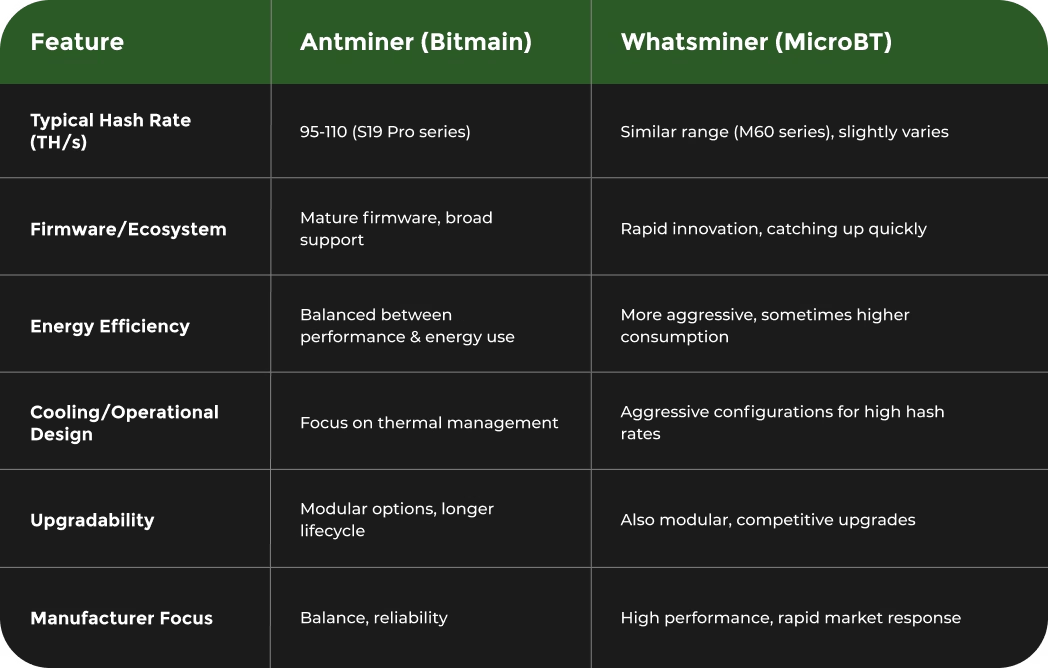
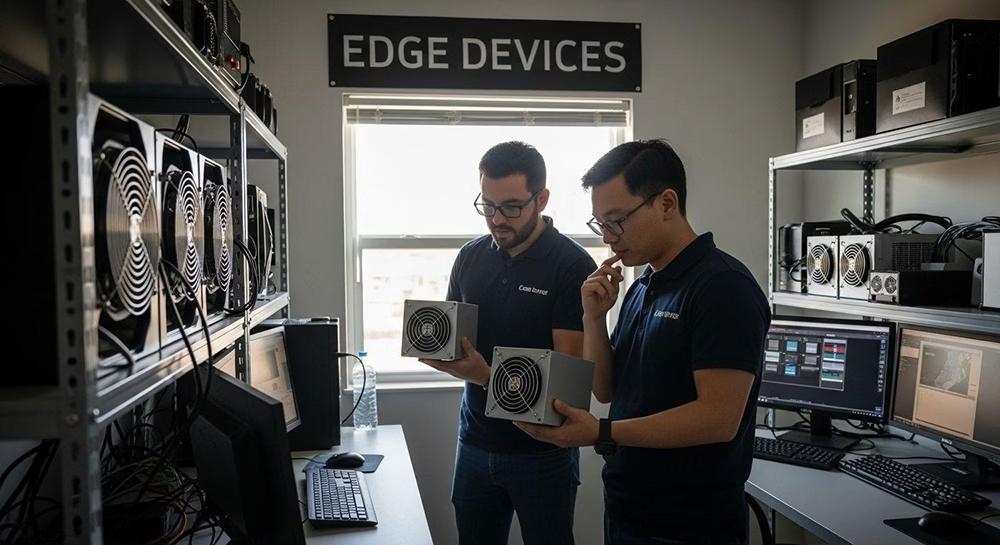
Edge computing refers to the decentralized processing of data closer to its source rather than relying on centralized data centers. In cryptocurrency, it enhances transaction speeds and overall network efficiency.
By 2025, edge computing is expected to allow Bitcoin miners to optimize energy consumption, enhance computational efficiency, and reduce dependency on large centralized mining farms, promoting a more decentralized ecosystem.
Edge devices improve transaction speeds, reduce latency, lower operational costs, and support smaller miners, thereby aligning with the decentralized ethos of cryptocurrency.
Edge computing allows for rapid processing of market data at the source, which supports instantaneous decision-making and enhances competitive trading advantages in dynamic financial environments.
If you are worried about the rising energy costs and the risk of falling behind in the new era of decentralized mining, you are not alone. The challenges of computational efficiency, hardware obsolescence, and network congestion highlighted in our article are a real concern for anyone looking to thrive in 2025’s crypto landscape. Edge computing is your bridge to faster transactions, lower bills, and genuine network resilience. Now is the perfect time to modernize your mining approach with expert-backed support and proven results.
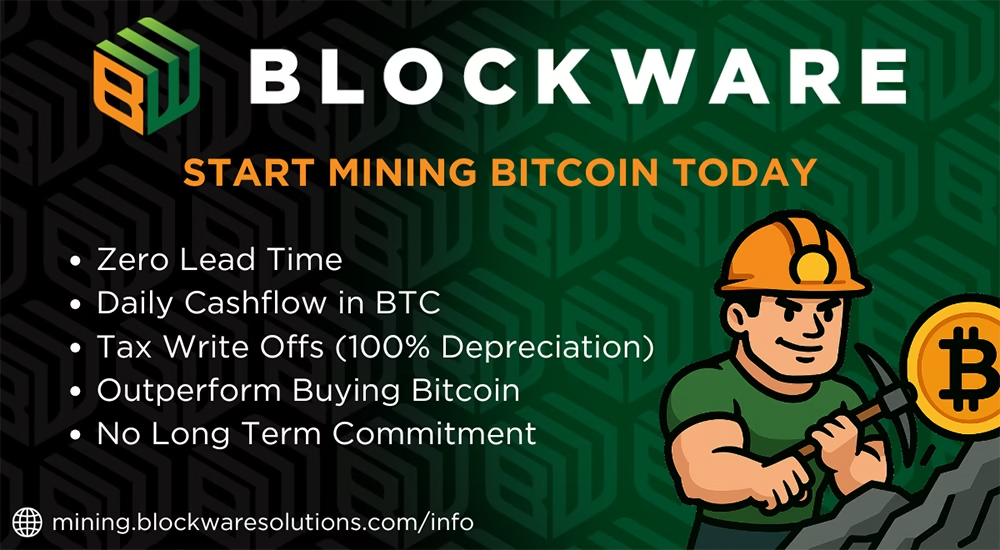
Partner with Blockware Solutions to leverage hosted miners optimized for edge computing. Access Mining-as-a-Service and on-demand ROI tools built for tomorrow’s market, not yesterday’s. Do not let centralized mining leave you behind. Start your edge-powered mining journey with us today—visit Blockware Solutions for immediate access and expert guidance.